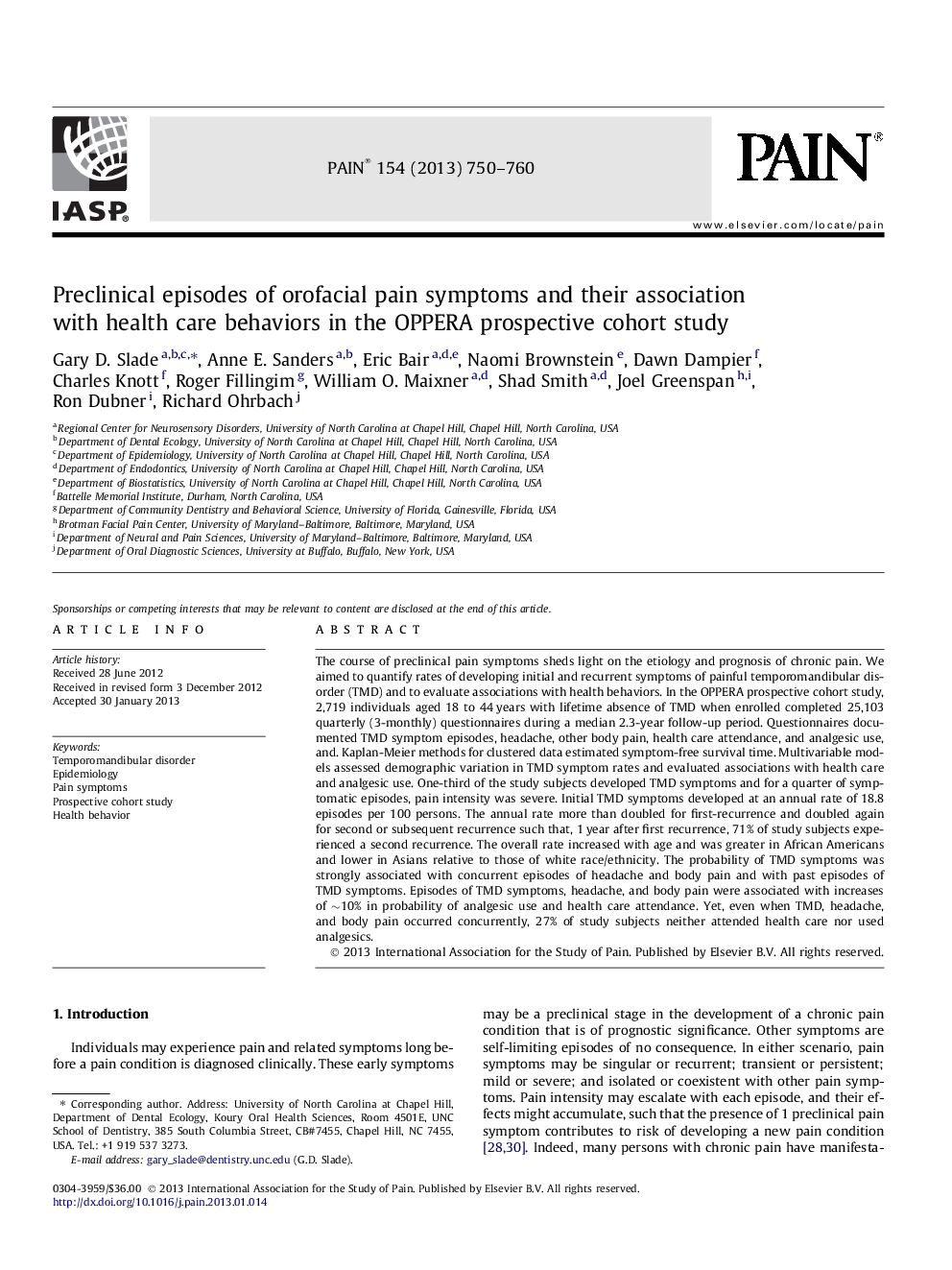| کد مقاله | کد نشریه | سال انتشار | مقاله انگلیسی | نسخه تمام متن |
|---|---|---|---|---|
| 10450656 | 918365 | 2013 | 11 صفحه PDF | دانلود رایگان |
عنوان انگلیسی مقاله ISI
Preclinical episodes of orofacial pain symptoms and their association with health care behaviors in the OPPERA prospective cohort study
دانلود مقاله + سفارش ترجمه
دانلود مقاله ISI انگلیسی
رایگان برای ایرانیان
کلمات کلیدی
موضوعات مرتبط
علوم زیستی و بیوفناوری
علم عصب شناسی
علوم اعصاب سلولی و مولکولی
پیش نمایش صفحه اول مقاله

چکیده انگلیسی
The course of preclinical pain symptoms sheds light on the etiology and prognosis of chronic pain. We aimed to quantify rates of developing initial and recurrent symptoms of painful temporomandibular disorder (TMD) and to evaluate associations with health behaviors. In the OPPERA prospective cohort study, 2,719 individuals aged 18 to 44Â years with lifetime absence of TMD when enrolled completed 25,103 quarterly (3-monthly) questionnaires during a median 2.3-year follow-up period. Questionnaires documented TMD symptom episodes, headache, other body pain, health care attendance, and analgesic use, and. Kaplan-Meier methods for clustered data estimated symptom-free survival time. Multivariable models assessed demographic variation in TMD symptom rates and evaluated associations with health care and analgesic use. One-third of the study subjects developed TMD symptoms and for a quarter of symptomatic episodes, pain intensity was severe. Initial TMD symptoms developed at an annual rate of 18.8 episodes per 100 persons. The annual rate more than doubled for first-recurrence and doubled again for second or subsequent recurrence such that, 1Â year after first recurrence, 71% of study subjects experienced a second recurrence. The overall rate increased with age and was greater in African Americans and lower in Asians relative to those of white race/ethnicity. The probability of TMD symptoms was strongly associated with concurrent episodes of headache and body pain and with past episodes of TMD symptoms. Episodes of TMD symptoms, headache, and body pain were associated with increases of â¼10% in probability of analgesic use and health care attendance. Yet, even when TMD, headache, and body pain occurred concurrently, 27% of study subjects neither attended health care nor used analgesics.
ناشر
Database: Elsevier - ScienceDirect (ساینس دایرکت)
Journal: PAIN® - Volume 154, Issue 5, May 2013, Pages 750-760
Journal: PAIN® - Volume 154, Issue 5, May 2013, Pages 750-760
نویسندگان
Gary D. Slade, Anne E. Sanders, Eric Bair, Naomi Brownstein, Dawn Dampier, Charles Knott, Roger Fillingim, William O. Maixner, Shad Smith, Joel Greenspan, Ron Dubner, Richard Ohrbach,